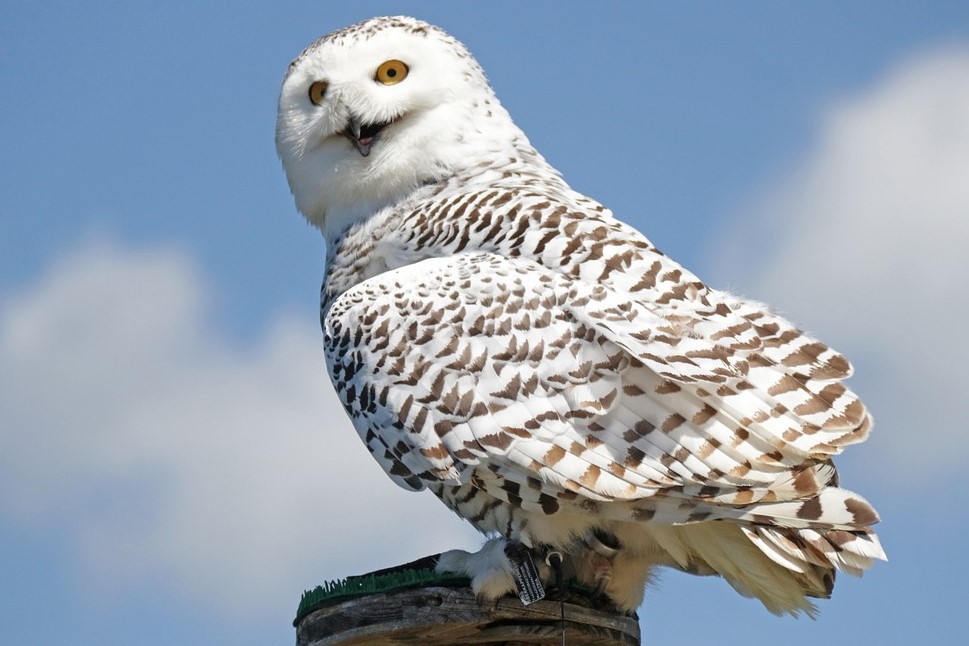
Snowy owl. Image: Christian Pirker by way of Pixabay
By Kelsi Kroll
Every winter lucky northern Great Lakes residents might catch a glimpse of the yellow, catlike eyes and milky down of the snowy owl.
And such a glimpse could go a long way.
That’s because Project SNOWstorm – a crew of scientists, bird banders and wildlife veterinarians – needs your sightings for research on the Arctic raptor’s mysterious migration patterns.
“Until recently, we arguably knew more about the ecology and behavior of snowy owls in their remote breeding grounds in the Arctic than we did about how they live when they’re down here in the northern U.S. and southern Canada in winter,” says Scott Weidensaul, co-founder of Project SNOWstorm, which is based at the Ned Smith Center for Nature and Art in central Pennsylvania. “Many scientists assumed these were lost, starving birds driven south by hunger and doomed to die — and who wanted to study doomed birds?
“In fact, the vast majority of snowy owls that come south are healthy and survive to migrate back north in the spring time,” he said.
Project SNOWstorm runs on volunteered time, said Weidensaul, who also directs the Ned Smith Center’s owl-banding project. That’s why every reported owl sighting bolsters the project.
The owls sometimes flock southward in massive invasions called irruptions, said Kenn Kaufman, a prolific birder and author from Oak Harbor, Ohio.
“Last winter was really exceptional in the Great Lakes region,” Kaufman said. “This winter, the season of 2018-2019, the flight isn’t nearly as large, but it’s still a little bigger than average. The recent big flights have occurred after the snowy owls had a very successful nesting season in parts of the Arctic, raising lots of young, which usually happens when lemmings or other small prey are at peak numbers.”
So how do you get that elusive glimpse this winter?
Try the project’s website, www.projectsnowstorm.org, where you can access interactive maps tracking the more than 75 owls the project has tagged over the past 5 years. Or check out eBird, the bird-distribution dataset from the Cornell Lab of Ornithology, where you can submit your sightings for Project SNOWstorm’s benefit.
Birders must take caution, however.
“Watch from a respectful distance, but don’t flush, and for sure don’t feed,” Weidensaul says.
Kaufman agrees.
“If people try to bait them, the owls will learn to associate humans with food, and inevitably they’ll be in danger,” Kaufman said. “Here in the Great Lakes region we are blessed to have the opportunity to see snowy owls, and we have a responsibility to enjoy them from a respectful distance.”
Hibernating for the rest of the winter? You can still support Project SNOWstorm by donating here.
